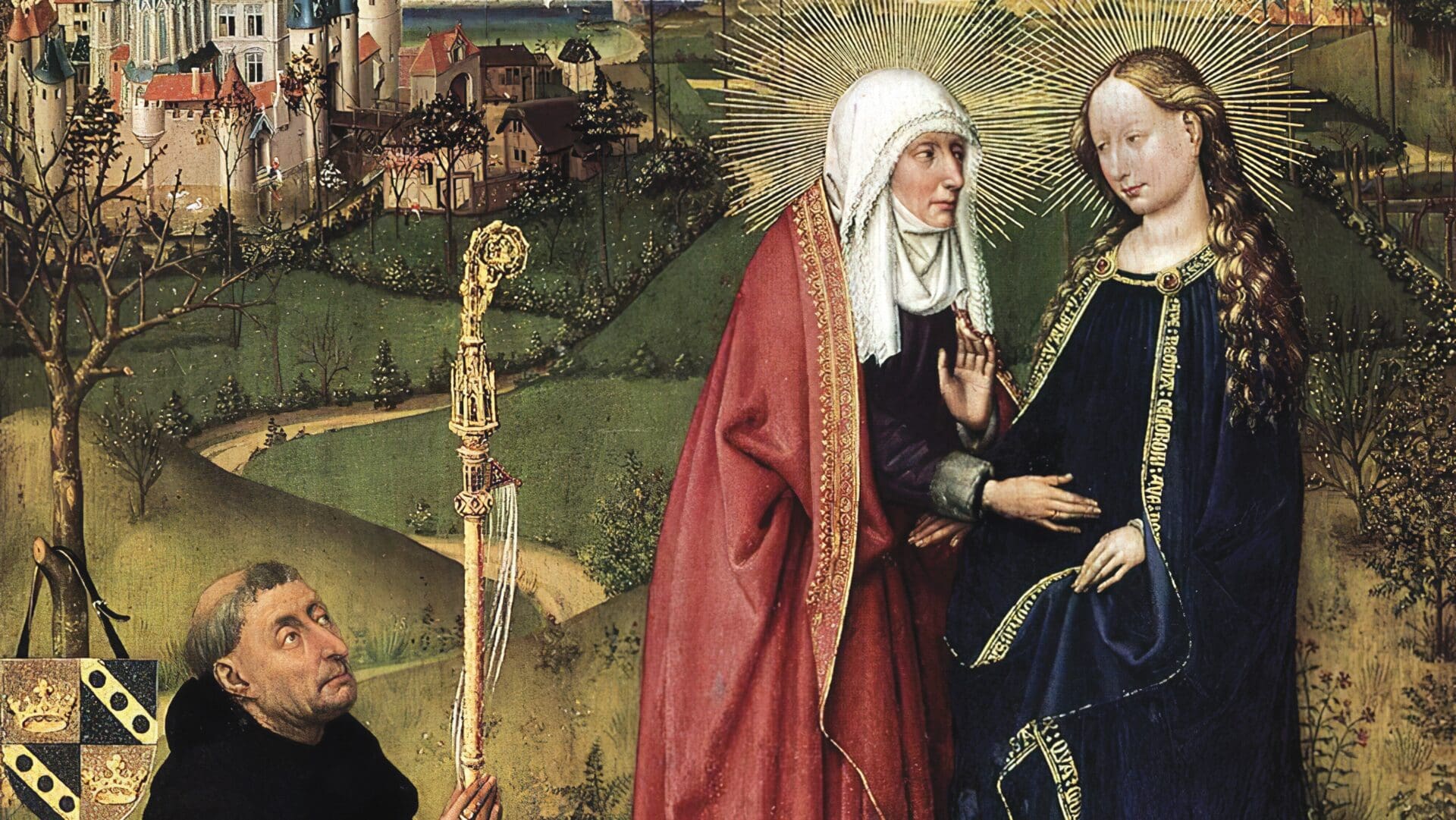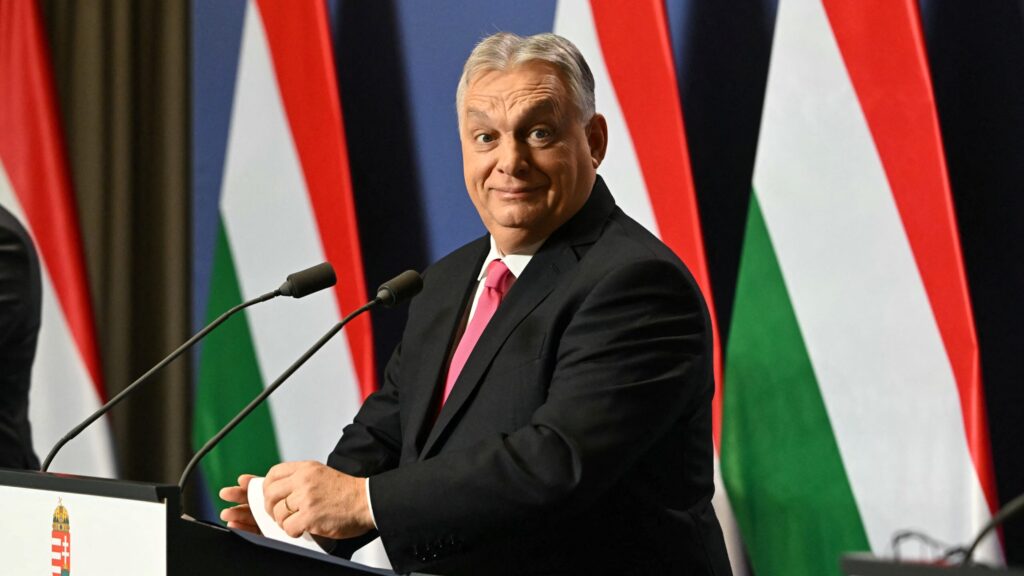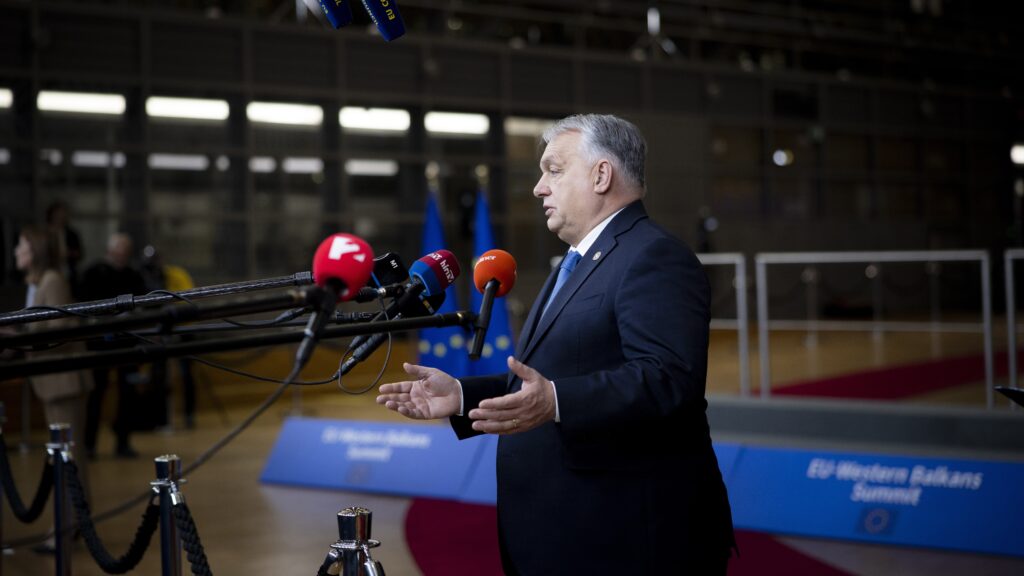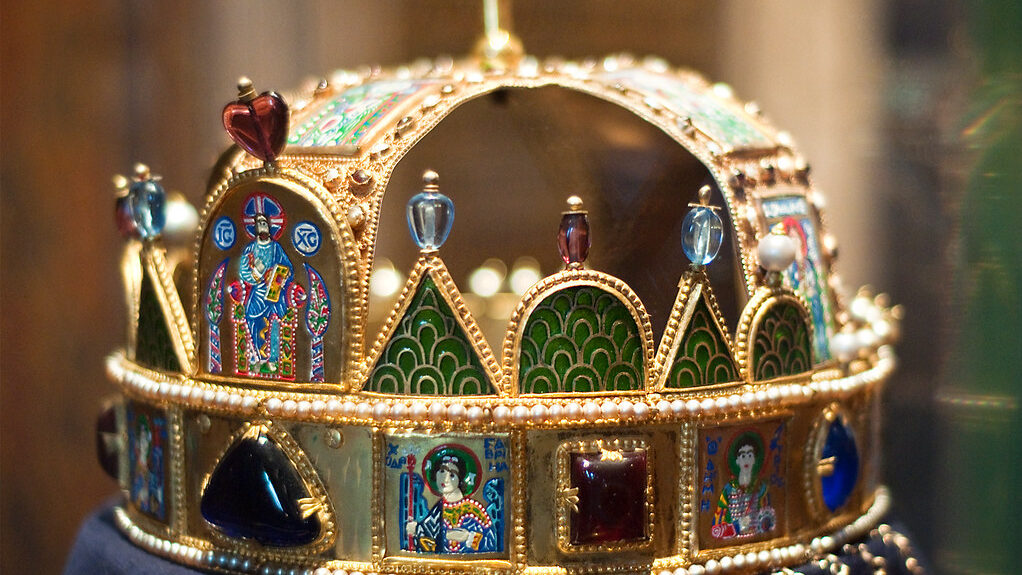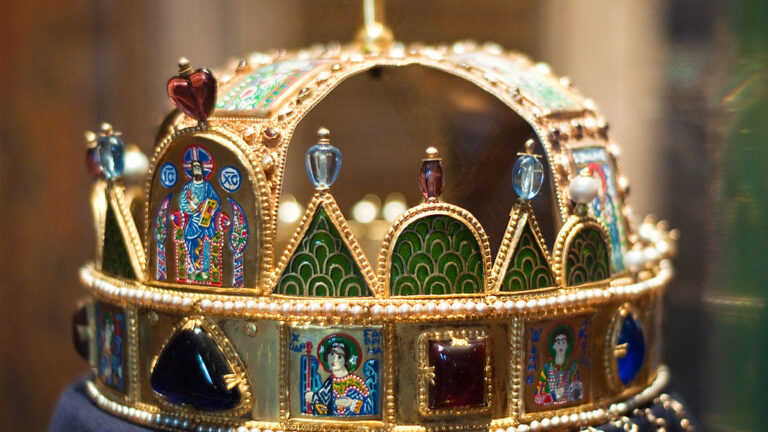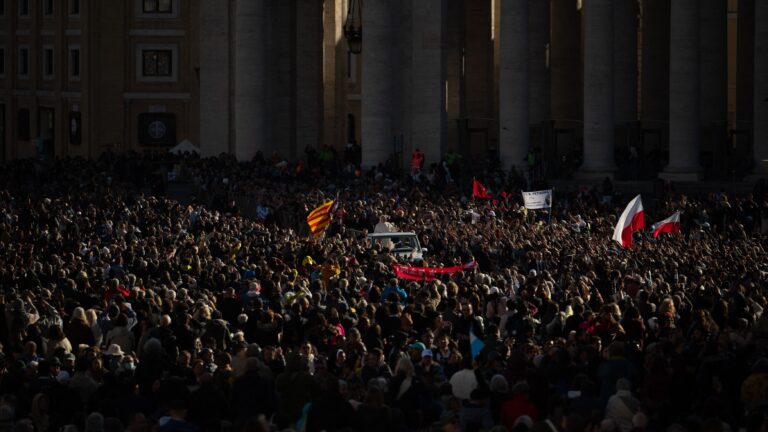This article was published in Vol. 4 No. 1 of our print edition.
This year, Gábor Mohos, parish priest of St Stephen’s Basilica in Budapest, who was appointed five years ago by Pope Francis as suffragan bishop of Hungary’s Esztergom-Budapest Archdiocese, celebrated his fiftieth birthday. Bishop Mohos has been working at the heart of the Hungarian Catholic Church for many years. Between 2003 and 2008, he worked as archbishop’s secretary to His Eminence Cardinal Péter Erdő, then for ten years, until 2018, he was the general secretary of the Catholic Bishops’ Conference of Hungary. These important positions have afforded him profound insights into the church’s current situation. It is therefore not surprising that Bishop Mohos was a member of the Hungarian delegation to the XVI Ordinary General Assembly of the Synod of Bishops. In our interview, we asked him about the synod initiated by Pope Francis. We also discussed the results of the latest Hungarian census, which are devastating for Hungary’s Christian churches.
***
The first session of the XVI Ordinary General Assembly of the Synod of Bishops, in which you participated, has drawn to a close. So far, the information that has reached believers about the work taking place in the synod and its results has been rather unspecific. What group work did you participate in? What directions have been outlined, and what can we expect as a result?
At the outset, it is worth noting that the Synod of Bishops is a relatively new institution that was established by Pope Paul VI after the Second Vatican Council—almost sixty years ago. The Synod of Bishops was, in a sense, a reaction to the changes that can still be seen in the world today, to the accelerating flow of information. The Church realized that it was no longer sufficient to hold a universal council every hundred years. The Synod of Bishops provides an opportunity for representatives of all the world’s bishops’ conferences to meet every three to four years, to focus on a specific topic. This is the institution of the Synod of Bishops, which had already existed.
However, its mode of operation changed significantly. On the one hand, synodal topics used to be continent-specific or focused on a particular topic—for instance, youth, family, or episcopal service. Now, however, the topic is synodality itself, which is rather general, since it applies to the whole church, not merely to a specific ministry or group. On the other hand, since the theme concerns the entire church, Pope Francis has appointed, in addition to the bishops, senior members of the church with voting rights, and further specified that an equal number of men and women should be selected. This gave the synod a new character.
The other change relates to the organization: the participants did not sit in a large, theatre-like hall, but instead all sat around round tables, not only during the small-group stage, when we discussed a specific topic in groups of twelve, but also in the plenary session, and then we always listened to the one person who was speaking there. The order of sessions determines the character of the entire synod.
The course of the negotiations was defined in advance by the Instrumentum Laboris, that is the working document which had already been made public before the synod began. We progressed according to the ideas of the document and the division of chapters, working through the topics listed in the Instrumentum Laboris and discussing them. This obviously determined the course of our discussion, constantly indicating that we should not digress too much, but follow the indicated topic, to ensure that the conversation did not become incoherent.
Synodality is an interesting term, because it is a relatively new concept. ‘Synod’ is not new, but synodality is, at least in this form. So much so that the idea is also included in the final document, so that we can deepen our understanding and interpretation of the concept. Thus, what we are discussing needs to be explored in more detail.
For myself, I have formulated my own understanding of what synodality means by trying to translate it into the familiar categories in which we think. I translated it by considering that baptism is the one thing common to all of us who are members of the church. Within this, some are monks, some are priests, some are married lay people, and everyone lives their lives differently, but baptism is the common ground, and I have come to increasingly emphasize this common ground. Of course, this is nothing new, because even 1,600 years ago, St Augustine said ‘for you, I am a bishop, with you, I am a Christian’. Thus, our shared experience of baptism is what connects us all. Who plays what role within the church is, if not a detail, at least a secondary question. This is what synodality now emphasizes—that we all share this gift of baptism and that makes us a community. Let us travel the road together, with everyone actively participating in the community. It should not be that some people are actively engaged while the others treat it only as a service, having children baptized, going to weddings, and occasionally attending church; instead, we should all live an active communal life. Perhaps this is one of the most important points of synodality. Let us listen to each other, pay attention to each other, because then we can arrive at a common denominator and move together as a people of faith on our life’s journey.
Before the synod, the so-called Synodal Way in Germany had a great impact throughout Europe, and represented a more progressive position compared to the mainstream with regard to, for example, the role of women or same-sex marriage. To what extent have these progressive guidelines prevailed?
I think what the German Synodal Way articulates is not a specifically German, but rather a particular spiritual trend that manifests very visibly in the German Synodal Way, or in the demands formulated there. However, it is not unique to Germany. There are many elsewhere who espouse a progressive stance. This is of course one position in the church, but it is not the only one: there are also other spiritual tendencies and currents that differ from it. At the synod, of course, more or less all tendencies are represented.
We ordinary Hungarian believers—based on our personal experiences—are very underinformed regarding the synodal process that has been going on for years. Differences can also be observed in each diocese regarding the preparedness of the faithful. In the meantime, I had the opportunity to write directly to you personally. What kind of comments have you been receiving from Hungarian Catholics, and in what quantity?
When we talk about the synod, it is important to understand that the process started two years before the October meeting. This had local, community, diocesan, and even continental levels. So it is a long process. The extent to which a particular local community, parish, or religious community was involved depends on many factors. I think that at the very beginning of the process, in 2021, many people did not quite understand or take the measure of the scale of the undertaking Pope Francis wanted to initiate. We are only now beginning to assess what it is all about. Synodality is such a new concept that it takes time to internalize it, and to work out who should participate in it and how. I think this follows from the fact that different communities are aware of and have been involved in the synodal process to very different degrees, and this is characteristic not only of Hungary, but of the world church more broadly. I think that the opportunity was there, it is just that we live in a world where there is such a flood of information pouring in on everyone, and not everyone got their heads around the possibilities offered when, for example, in our diocese, members of the representative bodies of all the parishes were called together by the cardinal to discuss this topic, so that everyone could add their thoughts to it.
The working material was compiled at a national level from the materials sent to the bishops’ conference by the dioceses, religious communities, and movements. There is also working material at the European level. In the spring, there was a European-level synodal gathering in Prague, where not only bishops, but also laypeople, priests, representatives, and monks participated in the first half of the event, and then the presidents of the bishops’ conferences themselves met. So there are antecedents, but not everyone was informed about what was taking place.
In the middle of last summer, I abruptly learned that they had encouraged those who felt compelled to do so to write comments to my e-mail address. I received quite a number of comments, and tried to read them all. Unfortunately, I have not been able to answer many of them because I do not have a separate secretariat or other apparatus for this—I deal with correspondence to my personal e-mail address myself. In any case, they formed an overall picture.
I feel that today’s world is in many ways in transition. One could analyze this from many points of view, in terms of how the world is changing, but it is certain that our way of life has changed significantly compared to that of our parents and grandparents. This certainly raises many questions, such as how we live in this world, and how we live our faith. It is legitimate within the church to ask how, for instance, the role of women can become more prominent. The essential question is how to reconcile this with the identity of the Catholic Church so that we remain Catholics and do not transform into something that is no longer us. So one question, for example, would be to ask how we can preserve our Catholic identity and at the same time emphasize the role of women in the church.
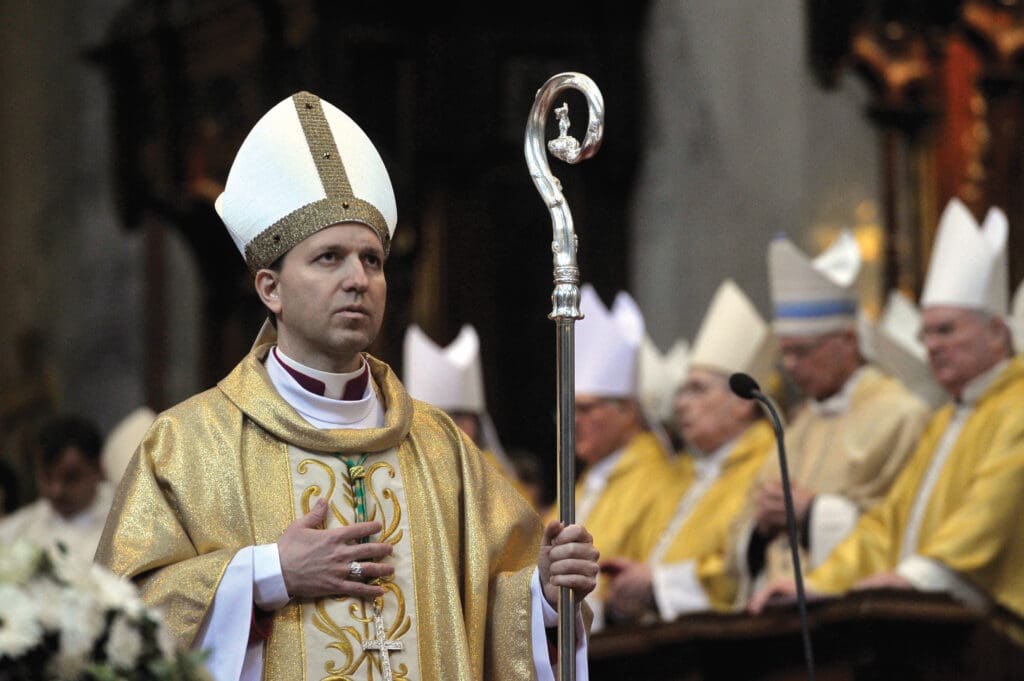
Moving on to the results of the Hungarian census, we also find ourselves confronting difficult questions. Some 60 per cent of the population answered the question about their religion. Comparing the result to those from the last census—eleven years earlier—the number of Catholics decreased from 3,817,000 to 2,900,000. The situation is similar when examining the proportions of those who profess to belong to a church: in the previous census, 71 per cent declared themselves Catholics, but this has now fallen to 50 per cent. There are several interpretations of this trend, and how the results should be evaluated.
Does it imply that the signs of a wider European, Western phenomenon—secularization, irreligiosity, and religious individualization—appear in Hungary? Or is it rather that processes specific to Hungary—for example, the government’s policy of supporting churches and the consequent impact on those who consider themselves Roman Catholics—are being reflected in the results? How do you interpret the results? What is the guiding thread by which you try to evaluate them?
I am not an expert on this topic and it must be underlined that serious professional knowledge is required to adequately interpret public opinion polls. What I see is that we gather this kind of data every ten years, but—as far as I understand it—the way in which questions on this topic are asked has also changed, which obviously affects the results. Thus, the concept changes slightly from census to census, making it difficult to compare the data. This complicates interpretation.
At the same time, I do also see a trend in terms of what an individual’s worldview may be. Although we consider this a public matter, it is still also very personal. So, to what extent one undertakes it, and how one experiences it, also changes. I see that there is a more reserved and cautious attitude on the part of many people. In this sense, politics in Hungary also extends to the field of religion, as some politicians define themselves as Christians. As a result, these things are mixed up on some levels: what someone believes in, and how they relate politically to the overall situation.
‘We have an openness to a kind of spiritual attitude that is willing to make sacrifices’
I think that there is a trend that can be observed in the entire Western world, which includes Hungary, whereby the number of people who practise their religion in the traditional manner is decreasing. Therefore, I think that the number of those who consciously practice their religion is decreasing in a smaller proportion than that of those who—so to speak—experience their membership of the church as a kind of cultural tradition. Devoted believers who actively participate in community life were, I think, not a very large percentage of the overall community in the past. Consequently, I think that the situation has not fundamentally changed from that point of view.
It is certain that in society as a whole, Christian and moral values are not the exclusive preserve of Christians. However, these values are being eroded to a certain extent. This is not good, because all of society needs a moral foundation, which society generally respects and values. This process of erosion is certainly not heading in a good direction.
Dwelling on these numbers a little longer, how do you see the role of churches? You also mentioned that many aspects can influence the interpretation of the census results, and there could even be methodological issues. But is there any conclusion that something needs to be changed? Are things headed in a good direction?
On the one hand, there are processes that go far beyond us as a church. In order to recognize wider social processes, the cultural impoverishment that is underway, it is not necessary to examine society at a scientific level, since we have been seeing the negative trends for many decades. These are processes on a scale that we cannot change. These are great historical processes. What the church can do in such a situation is to think about what needs to be most strongly emphasized. I think what is truly important for us is to clarify again and again the foundations of our faith, because those who belong to a community out of habit may be unaware of the fundamental elements of that belonging. If we can articulate this more clearly, it can mean more committed members for us.
When in the 1970s, not long after the Second Vatican Council, Joseph Ratzinger attempted to clarify what the church would be like over the coming decades, he put it in precisely these terms. Its membership would be smaller, but they would be much more conscious believers. Their sense of belonging to the community would be based on a much more personal and conscious decision, and consequently also a much bigger part of their everyday lives. I think that if the identity of a community is clearer and more conscious, it makes the decision for those who might be weighing up whether or not to join this community much easier. If the outlines are clear, it is more straightforward to decide yes, I find it attractive, I want to join it, or, conversely, no, it is not for me. I think that this is what we can do: articulate more clearly our identity and our values, our faith, our belief in eternal life, and that it is worth being honest and fair because that is what makes a person truly human. If these are clearly stated, it will mean a more attractive church overall.
As custodian of the Holy Right Hand, the relic of our country’s founder, King Saint Stephen, what do you see as the source of hope for Hungary specifically? Whence can Hungarians draw hope?
One of the peculiarities of the Hungarian spirit is that—no doubt as a result of our historical past—we have an openness to a kind of spiritual attitude that is willing to make sacrifices, in prayer and fasting, to obtain peace. There have been many calls for prayers or even fasts for peace, both from the Holy Land and from the Vatican. It is a position that can be built on, and it has a solid record of accomplishment. It is enough to think of St Margaret in the 1200s, who lived this conviction very seriously, and led to her mission for peace between King Béla and his brother István. If we can build on this tradition of openness to peace, it will give us a specific identity for the future and prepare us for a spiritual struggle.
We should perceive clearly that there is a profound competition or struggle between different ideologies and spiritual attitudes, which has a supernatural dimension. We fight this struggle not by social means, but with prayer and fasting. These are our tools, and they can give us a very deep commitment, which is perhaps uniquely characteristic of Hungarians. Not unique to Hungary, of course, but perhaps more prominent here than elsewhere.

